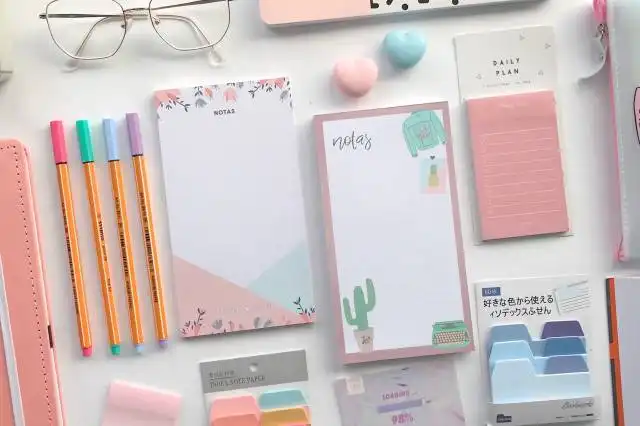Start an Art Restoration Business
Unveiling the Time-Traveling Magic of Art Restoration Businesses
| Updated


ART RESTORATION BUSINESS
Dive into the splendid pool of preserving ancient history with an Art Restoration business! Here, patience meets expertise to breathe life into timeless masterpieces. Your task is akin to a surgeon delicately mending wounds - except your patients are precious artworks showing signs of wear and tear. For a die-hard lover of art and history who has a keen eye for detail and steady hands, setting up an Art Restoration business is a ticket to a thrilling journey through the lanes of past beauty while ensuring its perseverance for future generations. Your responsibility lies in restoring and conserving artworks by maintaining their integrity and appearance while minimizing the impact of aging.
Jump to Business Plan
RELATED BUSINESS IDEAS
Browse ALL Arts & Crafts Business Ideas
Discover Your Perfect Domain
Unlock the door to your online success with our hand-picked selection of premium domain names. Whether you're starting a new venture or rebranding an existing one, the right domain can set the tone for your digital presence. Browse through our curated list, each with its unique potential to enhance your brand's visibility and credibility.
ART RESTORATION MINI BUSINESS PLAN
This a quick reality check to help you identify the strengths and weaknesses of your business concept before you dive in.
Business Analysis: Art Restoration
Expected Percent Margins:
- Gross Margin: Approximately 70-80%
- Net Profit Margin: Approximately 20-30%
Earnings Expectations:
- Daily Earnings: $150 - $400
- Weekly Earnings: $750 - $2,000
- Monthly Earnings: $3,000 - $8,000
- Annual Earnings: $36,000 - $96,000
Actions to Achieve These Numbers:
Skill and Training:
- Art Restoration Training: Significant expertise in art restoration is necessary. Courses, degrees, or other forms of formal training are beneficial.
Marketing and Customer Acquisition:
- Website and Social Media: A professional website showcasing previous restoration work is crucial, alongside regular engaging updates on social media platforms.
- Networking: Connecting with museums, galleries, art dealers, antique shops, and private collectors can provide a steady stream of business.
Tools and Supplies:
- Initial Investment: Tool kits and restoration materials can be expensive, initially requiring an investment upward of $10,000 depending on the scope of your services.
Work Space:
- Rent: Ideally, a studio space where you can meet clients and perform restorations is beneficial. Depending on location, expect to budget at least $500-$2,000 monthly for rent.
Insurance:
- Insurance: Art restoration carries risk, so having comprehensive business insurance is critical.
Legal Compliance:
- Certifications and Licenses: Depending on your location, certain business licenses and certifications might be needed.
Remember, the above figures are estimations and can vary depending on various factors. It's important to create a detailed business plan and consult with business and financial experts to get accurate, personalized advice for your art restoration business.
NOT WHAT YOU HAD IN MIND? Here are more ideas



Browse ALL Arts & Crafts Business Ideas
Grab Your Business Website Name
Before you get caught up in the whirlwind of setting up your business, invest in a domain name. It's a small but significant step that lays the foundation for your brand and makes it easier for customers to find and trust you. Just like you wouldn't build a house without securing the land first, don't build a business without securing your domain name.
"Why? Can't that wait?" Here's why it shouldn't
Step One: Determine if the Business is Right Endeavor
Breakdown of Startup Expenses
Starting an art restoration business can be a costly endeavor. Before beginning, it is important to have a clear understanding of the startup expenses. This includes the cost of materials, such as paints, brushes, and other supplies, as well as the cost of renting a workspace. Additionally, the cost of any necessary equipment, such as a computer, printer, and scanner, should be taken into account. It is also important to consider the cost of advertising and marketing, as well as the cost of any necessary licenses or permits.
Breakdown of Ongoing Expenses
In addition to startup expenses, it is important to consider the ongoing expenses of running an art restoration business. This includes the cost of materials, such as paints, brushes, and other supplies, as well as the cost of renting a workspace. Additionally, the cost of any necessary equipment, such as a computer, printer, and scanner, should be taken into account. It is also important to consider the cost of advertising and marketing, as well as the cost of any necessary licenses or permits. Additionally, the cost of any necessary insurance should be taken into account.
Examples of Ways to Make Money
There are several ways to make money in the art restoration business. One way is to offer services to individuals and businesses. This can include restoring artwork, repairing frames, and providing cleaning services. Additionally, it is possible to make money by selling art supplies and equipment. Another way to make money is to offer classes or workshops on art restoration. Finally, it is possible to make money by selling restored artwork.
Step Two: Name the Business
When naming a business, it is important to choose something that is memorable and easy to pronounce. It should also be something that is unique and stands out from other businesses in the same industry. Additionally, it should be something that reflects the values and mission of the business. It is also important to make sure that the name is not already taken and that the domain name is available. Researching the competition and seeing what names they have chosen can be a great way to get inspiration for a business name. Additionally, brainstorming with friends and family can be a great way to come up with a unique name. Finally, it is important to make sure that the name is legally available and that the business can be registered with the state.
Step Three: Develop a Business Plan
The third step in starting an art restoration business is to develop a business plan. A business plan is an essential document that outlines the goals and objectives of the business, as well as the strategies and tactics that will be used to reach those goals. A business plan should include a description of the business, a market analysis, a financial plan, a marketing plan, and an operational plan.
Description of the Business
The first component of the business plan should be a description of the business. This should include a brief overview of the business, the services that will be offered, the target market, and the competitive advantage the business will have. It should also include the mission statement and the goals of the business.
Market Analysis
The second component of the business plan should be a market analysis. This should include an analysis of the current market for art restoration services, the potential customer base, and the competition. It should also include an analysis of the industry trends and the potential opportunities and threats.
Financial Plan
The third component of the business plan should be a financial plan. This should include a breakdown of the startup costs, the ongoing costs, and the expected revenues. It should also include a financial forecast for the first three years of operation.
Marketing Plan
The fourth component of the business plan should be a marketing plan. This should include a description of the marketing strategies that will be used to reach potential customers, as well as a plan for how those strategies will be implemented. It should also include a budget for the marketing activities.
Operational Plan
The fifth and final component of the business plan should be an operational plan. This should include a description of the processes and procedures that will be used to run the business, as well as a plan for how those processes and procedures will be implemented. It should also include a timeline for the implementation of the operational plan.
Step Four: Obtain Licensing and Permits
In order to start an art restoration business, you will need to obtain the necessary licensing and permits. Depending on the state you are operating in, the types of permits and licensing you will need can vary. Generally, you will need a business license, a sales tax permit, and a zoning permit. Additionally, you may need to obtain a contractor’s license if you plan to hire employees or subcontractors. You may also need to obtain a Certificate of Occupancy from your local fire department.
Research Requirements
Before you can obtain the necessary licensing and permits, you will need to research the requirements in your area. Start by visiting your local government website to find out what type of permits and licenses you will need. Additionally, you can contact your local Chamber of Commerce or Small Business Administration office for more information.
Apply for Licensing and Permits
Once you have researched the requirements, you can begin the application process. Depending on the type of license or permit you are applying for, the application process can take anywhere from a few days to several weeks. You will also need to pay a fee for each permit or license you apply for.
Keep Records
Once you have obtained the necessary licensing and permits, you will need to keep records of them. This includes keeping copies of the applications and any other paperwork associated with the process. Additionally, you will need to keep track of when the licenses and permits need to be renewed. This will help ensure that your business remains in compliance with local regulations.
Step Five: Find a Location
When choosing a location for an art restoration business, there are several factors to consider. First, it is important to consider the size of the space needed. Depending on the type of art restoration services being offered, the size of the space may vary. For example, if the business is offering services such as painting restoration, a larger space may be necessary to accommodate the larger works of art. Additionally, the location should be easily accessible to clients. This could mean being located in a central area of town or near a major highway. It is also important to consider the cost of the space. Renting a space can be costly, so it is important to research the area and compare prices to ensure the best deal is found.
Obtaining the Necessary Permits
Once a location has been chosen, the next step is to obtain the necessary permits. Depending on the type of art restoration services being offered, different permits may be required. For example, if the business is offering services such as painting restoration, a permit may be required to use certain chemicals or solvents. Additionally, a business license may be necessary to operate the business. It is important to research the local regulations and obtain the necessary permits before beginning operations.
Setting Up the Space
Once the permits have been obtained, the next step is to set up the space. This includes purchasing the necessary equipment and supplies for the business. Depending on the type of art restoration services being offered, the equipment and supplies may vary. For example, if the business is offering painting restoration services, the space may need to be equipped with a variety of tools such as paintbrushes, solvents, and other materials. Additionally, the space should be organized and comfortable for clients to visit. This could include setting up a reception area and comfortable seating.
Step Six: Purchase Supplies and Equipment
When starting an art restoration business, it is important to purchase the necessary supplies and equipment. This list should include items such as a workbench, tools, and cleaning supplies. Depending on the type of restoration services offered, additional items such as a vacuum cleaner, dusters, and other specialized tools may be necessary. It is important to research the best quality supplies and equipment for the job, as well as the best prices. Shopping around for the best deals can help to keep startup costs down.
Insurance
Another important step in starting an art restoration business is to purchase the necessary insurance. This should include liability insurance to protect against any potential damages to the artwork or property of the clients. It is also important to purchase business insurance to protect the business itself, as well as any employees. It is important to research the different types of insurance available and to purchase the coverage that best suits the business.
Licensing
In addition to insurance, it is important to obtain the necessary licensing for the business. This can vary depending on the state and local regulations, so it is important to research the requirements in the area. This may include a business license, as well as any special licenses or permits required for the type of work being done. It is important to ensure that all licensing requirements are met in order to operate the business legally.
Step Seven: Market the Business
When it comes to marketing the business, there are a variety of ways to get the word out. Examples of ways to market the business include: creating a website, utilizing social media, attending art restoration trade shows, and networking with other art restoration professionals. Additionally, creating a blog or podcast to discuss the art restoration process and tips for success can be a great way to reach potential customers.
Tips for Effective Marketing
When marketing the business, it is important to focus on the unique services offered and the value that the business can provide to customers. Additionally, it is important to create a consistent message across all marketing platforms. This will help to ensure that potential customers have a clear understanding of the services offered and the value that the business can provide. Finally, it is important to track the results of all marketing efforts to ensure that the most effective strategies are being utilized.
Step Eight: Hire Employees
When it comes to hiring employees, it is important to find people who have the same passion and dedication to art restoration as you do. It is also important to find employees who have the right skills and experience for the job. When interviewing potential employees, ask questions about their experience and qualifications, and make sure to check references. It is also important to make sure that the employees you hire are familiar with the tools and techniques used in art restoration.
Benefits of Hiring Employees
Hiring employees can be beneficial to your business in many ways. Having employees can help to increase productivity and efficiency, as they can help to take on some of the workload. Additionally, having employees can help to create a team atmosphere, which can help to foster creativity and collaboration. Furthermore, having employees can help to reduce the amount of stress and pressure that comes with running a business.
Training Employees
Once you have hired employees, it is important to provide them with the proper training. This includes providing them with the necessary tools and techniques for art restoration, as well as teaching them the proper safety procedures. Additionally, it is important to provide them with the necessary resources and materials needed for the job. Finally, it is important to provide them with the necessary support and guidance to ensure that they are successful in their roles.
Step Nine: Establish a Financial System
The final step in starting an art restoration business is to establish a financial system. This includes setting up a budget, tracking expenses, and setting up a payment system. It is important to have a system in place to ensure that the business is running smoothly and that all financial obligations are met.
When setting up a budget, it is important to consider both the startup costs and ongoing expenses associated with the business. Start-up costs may include the cost of supplies, rent, and any other necessary expenses. Ongoing expenses may include the cost of supplies, rent, and any other necessary expenses. It is important to create a budget that takes into account both the start-up costs and the ongoing expenses.
When setting up a payment system, it is important to consider the types of payment methods that will be accepted. This may include cash, credit cards, or online payment systems. It is also important to consider the fees associated with each payment method. Additionally, it is important to consider the security of the payment system, as well as any additional fees associated with the payment system.
When tracking expenses, it is important to keep accurate records of all expenses associated with the business. This includes the cost of supplies, rent, and any other necessary expenses. It is also important to keep track of any income that is generated from the business. This includes any money that is earned from the sale of art restoration services.
Finally, it is important to have a system in place to ensure that all financial obligations are met. This includes paying taxes, filing any necessary paperwork, and making sure that all bills are paid on time. Having a system in place to manage the finances of the business will help to ensure that the business is running smoothly and that all financial obligations are met.
EXPLORE MORE CATEGORIES
Browse ALL Business Idea Categories
TAKE THE NEXT STEPS










